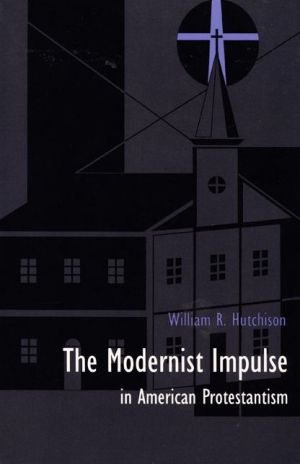

 |

|

The average rating for The modernist impulse in American Protestantism based on 2 reviews is 4 stars.
Review # 1 was written on 2017-06-24 00:00:00 Francis Romero Francis RomeroReads well alongside Marsden's Fundamentalism and American Culture. |
Review # 2 was written on 2014-03-11 00:00:00 Kenny Griffin Kenny GriffinOverview: Hutchison's work is a roughly chronological narrative of the rise and decline of modernism, a particular type of liberal theology. He defines modernism as the union of three components: 1) conscious adaptation of religious ideas to modern culture; 2) acknowledgment of God's immanence in and revelation through human cultural development; and 3) a belief that human society is moving toward the realization of the Kingdom of God. Although it was possible for one to be liberal or progressive without being a modernist, it was in fact modernism that gave liberal Protestantism is dynamism in the late nineteenth and early twentieth centuries. The movement arose largely among Unitarians and Episcopalians before becoming mainstream by passing into the larger Protestant denominations. The 1870s and 1880s were heady with the New Theology's pursuit of a "devout Zeitgeist." A generation of irenic modernists constructed a broad coalition focused on the salvation of human civilization. As the movement gained visibility in the 80s and 90s, it began to encounter resistance. Still, it gained steam as newer figures conversant with the most recent German theology came on the scene. As the previous decade had made the case for religion in general, the Ritschlians turned their attention to the uniqueness of Christianity. The turn of the century saw the formation of an internal critique, including a loss of confidence in philosophical idealism and a reassessment of human cultural progress. This critique was reinforced by World War I, which shattered at least the more superficial liberals ideas of human goodness and smooth human progress. Fundamentalists, secular humanists, and neo-orthodox joined in critiquing modernists as not really Christian and as olivious to the real depravity of the world. Indeed, even when modernists retained their commitment to liberalism and a good share of influence, they muted their insistence on inherent human goodness and cultural progress as revelation. Method: Hutchison engages in both broad and careful readings of modernist literature. (An appendix offers a table of contemporary reviews of their works.) Thus, he has a good grasp on the spectrum of religious opinion. Nuance abounds. Also, he has worked to develop a network of influential personalities. Many names show up in several chapters, reinforcing the idea that modernism was an identifiable coalition headed by recognized leaders and propagated through sympathetic institutions. To this extent, he has bridged the gap between a purely intellectual history and a social-cultural history. However, his work remains rather narrowly intellectual and elitist. He speaks of culture, but except for World War I, he means only the culture of ideas. His voices are those of pastors and professors; his sources are published books and book reviews. There are no women's voices in the book. The activity of lay Protestant liberals is omitted. Despite all the attention to Zeitgeist and adaptation as themes, one wonders whether adaptions were being made to the concerns of parishioners or merely to the intellectual sensibilities of theologians. For all the controversy over ideas, there is little indication as to how the life of a Protestant liberal church member differed from that of a conservative or Unitarian. For example, at one point Hutchison asserts that there was a greater early evangelical appropriation of liberal theology than is commonly recognized. Hutchison appeals to the 1874 heresy trial of modernist David Swing, which ended overwhelmingly in Swing's favor, to show that there must have been popular support for some modernist ideas. But since only ordained men could vote at the heresy trial, what does this tell us of popular support? In conclusion, within his chosen scope and approach, Hutchison delivers excellent results. The limitations of his study reveal how much work remains to be done before a fully cultural and embodied depiction of Protestant modernism can emerge. |
CAN'T FIND WHAT YOU'RE LOOKING FOR? CLICK HERE!!!